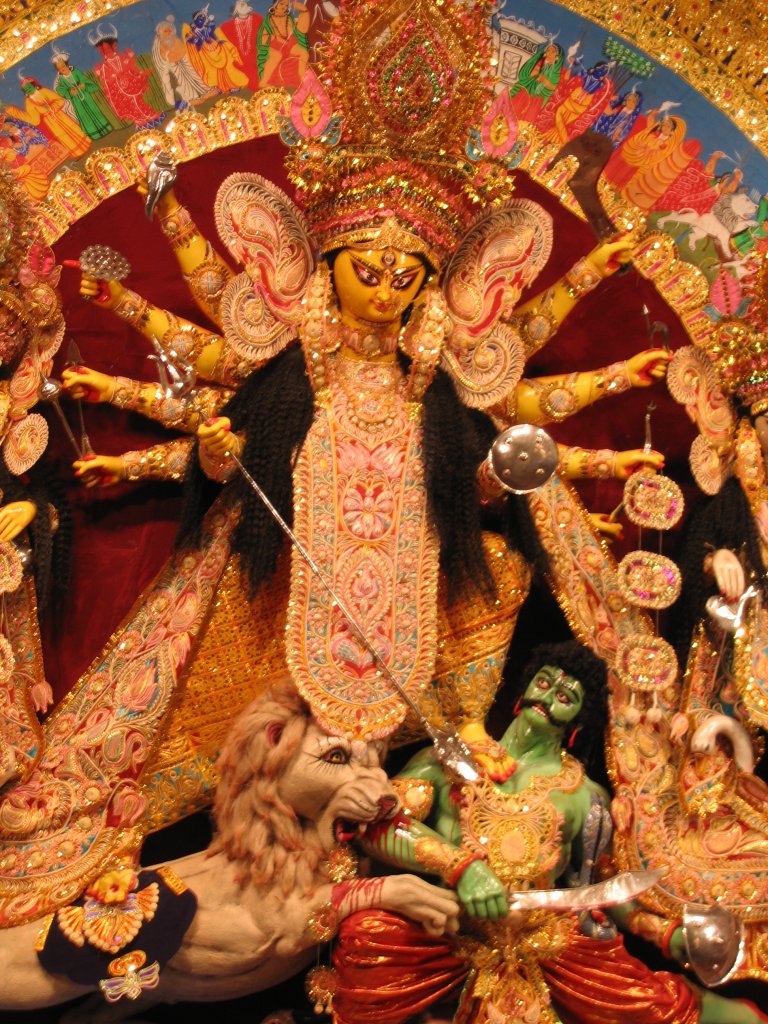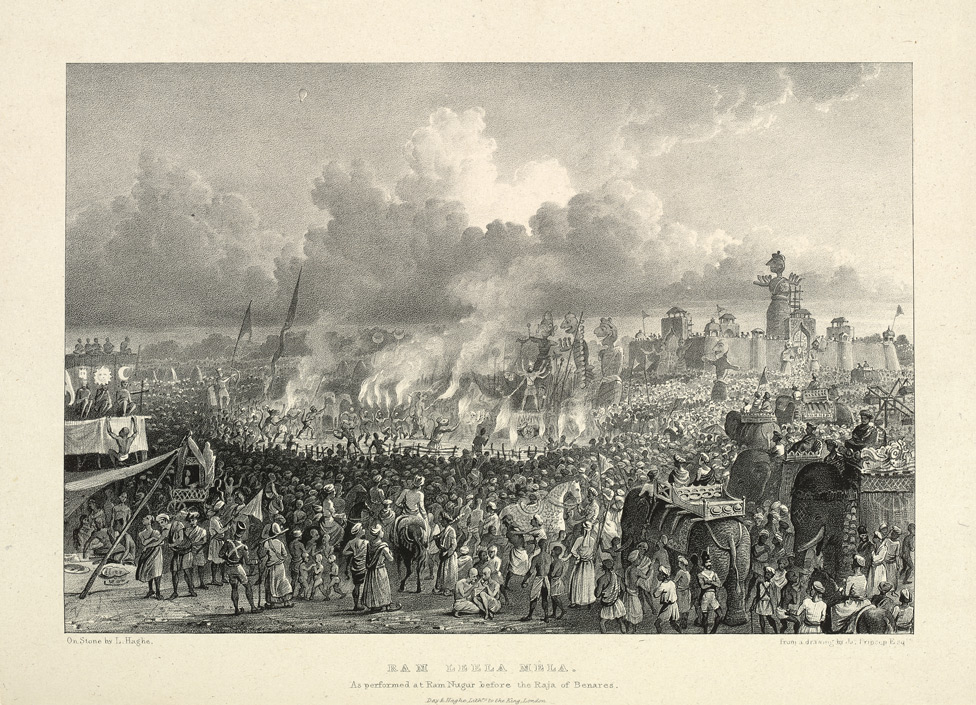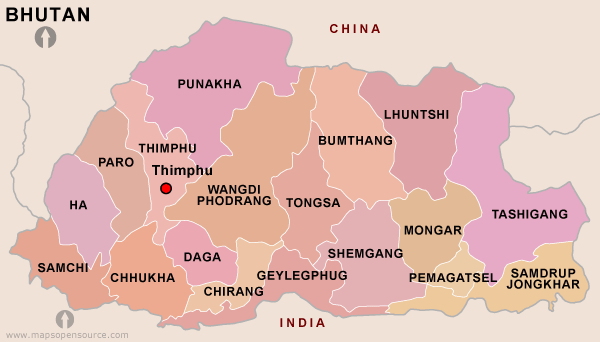|
Dashain
Dashain or Bada'dashain, also known as Vijaya Dashami in Sanskrit, is a Hindu religious festival in Nepal, Sikkim, West Bengal, Assam, South India, and Sri Lanka. It is also celebrated by other religions in Nepal and elsewhere, including the Lhotshampa of Bhutan and the Burmese Gurkhas of Myanmar. The festival is also known as Nauratha, derived from the Sanskrit word for the festival: Navaratri (Nine Nights). The longest festival in the Bikram Sambat and Nepal Sambat annual calendars, it is celebrated by Nepali Hindus and their diaspora. In Nepal, the 15-day festival is the country's longest. People return from all parts of the world and different parts of the country to celebrate together. The festival falls in September or October, beginning on the Paksha#Shukla Paksha, Shukla Paksha (bright lunar night) of the month of Ashwin, Ashvin and ending on Purnima (day), Purnima, the full moon. Of the fifteen days it is celebrated, the most celebrated are the first, seventh, eighth, ... [...More Info...] [...Related Items...] OR: [Wikipedia] [Google] [Baidu] |
Durga
Durga (, ) is a major Hindu goddess, worshipped as a principal aspect of the mother goddess Mahadevi. She is associated with protection, strength, motherhood, destruction, and wars. Durga's legend centres around combating evils and demonic forces that threaten peace, prosperity, and dharma, representing the power of good over evil. Durga is believed to unleash her divine wrath against the wicked for the liberation of the oppressed, and entails destruction to empower creation. Durga is seen as a motherly figure and often depicted as a beautiful woman, riding a lion or tiger, with many arms each carrying a weapon and often defeating demons. She is widely worshipped by the followers of the goddess-centric sect, Shaktism, and has importance in other denominations like Shaivism and Vaishnavism. The most important texts of Shaktism, Devi Mahatmya and Devi Bhagavata Purana, revere Devi (the Goddess) as the primordial creator of the universe and the Brahman (ultimate truth and reali ... [...More Info...] [...Related Items...] OR: [Wikipedia] [Google] [Baidu] |
Navaratri
Navaratri () is an annual Hindu festival observed in honor of the goddess Durga, an aspect of Adi Parashakti, the supreme goddess. It spans over nine nights, first in the month of Chaitra (March/April of the Gregorian calendar), and again in the month of Ashvin (September–October). It is observed for different reasons and celebrated differently in various parts of the Hindu Indian cultural sphere. Theoretically, there are four seasonal ''Navaratris''. However, in practice, it is the post-monsoon autumn festival called Sharada Navaratri. There are 2 Gupta Navaratris or "Secret Navaratris" as well, one starting on the Shukla Paksha Pratipada of the Magha Month (Magha Gupta Navaratri) and another starting in the Shukla Paksha Pratipada of Ashadha Month. Etymology and nomenclature The word ''Navarātram'' means "a period of nine nights" in Sanskrit, ''nava'' meaning "nine" and ''ratri'' meaning "night". Dates and celebrations In the eastern and northeastern states of ... [...More Info...] [...Related Items...] OR: [Wikipedia] [Google] [Baidu] |
Nepali Hindus
Hinduism is the Religion in Nepal, largest religion of Nepal. In 2006, the country declared itself a secular country through democracy, after the abolition of its monarchy. According to the 2021 Nepal census, 2021 census, the Hindu population in Nepal is estimated to be around 23,677,744 which accounts for at least 81.19% of the country's population, the highest percentage of Hinduism by country, Hindus of any country in the world. Vikram Samvat, one of the two official calendars used in Nepal, is a solar calendar essentially the same to that widespread in North India as a religious calendar, and is based on Solar unit of time. Among the ethnic groups are the Bahun, Thakuri, Tharu people, Tharu, Chhetri, Magars, Caste system in Nepal, Hill Dalits, Madheshi people, Madheshi, Newar people, Newari people. Meanwhile, among the major ethnic groups Sherpa people, Sherpa, Rai people, Rai, Limbu people, Limbu, Gurung and Tamang people, Tamang have lowest percentage of followers of Hindui ... [...More Info...] [...Related Items...] OR: [Wikipedia] [Google] [Baidu] |
Vijaya Dashami
Vijayadashami (), more commonly known as Dassahra in Hindi, and also known as Dashāhra or Dashain in Bhojpuri, Maithili and Nepali, is a major Hindu festival celebrated every year at the end of Durga Puja and Navarahtri. It is observed on the tenth day of the month of Ashvin, the seventh in the Hindu lunisolar calendar. The festival typically falls in the Gregorian calendar months of September and October, more specifically between 27 September and 26 October. It is celebrated on the tenth day of the waxing moon (Shukla Paksha) of the Ashvayuja month. Vijayadashami is observed for different reasons and celebrated differently in various parts of India and Nepal. In the southern, eastern, northeastern, and some northern states of India, Vijayadashami marks the end of Durga Puja, commemorating goddess Durga's victory against Mahishasura to restore and protect ''dharma''. In the northern, central, and western states, it marks the end of Ramlila and commemorates the deity Ra ... [...More Info...] [...Related Items...] OR: [Wikipedia] [Google] [Baidu] |
Nepal
Nepal, officially the Federal Democratic Republic of Nepal, is a landlocked country in South Asia. It is mainly situated in the Himalayas, but also includes parts of the Indo-Gangetic Plain. It borders the Tibet Autonomous Region of China China–Nepal border, to the north, and India India–Nepal border, to the south, east, and west, while it is narrowly separated from Bangladesh by the Siliguri Corridor, and from Bhutan by the States and union territories of India, Indian state of Sikkim. Nepal has a Geography of Nepal, diverse geography, including Terai, fertile plains, subalpine forested hills, and eight of the world's ten List of highest mountains#List, tallest mountains, including Mount Everest, the highest point on Earth. Kathmandu is the nation's capital and List of cities in Nepal, its largest city. Nepal is a multi-ethnic, multi-lingual, multi-religious, and multi-cultural state, with Nepali language, Nepali as the official language. The name "Nepal" is first record ... [...More Info...] [...Related Items...] OR: [Wikipedia] [Google] [Baidu] |
Durga Puja
Durga Puja (ISO 15919, ISO: , ), also known as Durgotsava or Shaaradotsava, is an annual festival originating in the Indian subcontinent which pays homage to the Hinduism, Hindu goddess Durga, and is also celebrated because of Durga's victory over Mahishasura. It is the biggest festival of Bengali Hindus and the Indian state of West Bengal. Durga Puja in Kolkata, Durga Puja as celebrated in Kolkata, West Bengal's capital city, was inscribed on the UNESCO Intangible Cultural Heritage Lists, intangible cultural heritage list of UNESCO in December 2021. In addition to West Bengal, Hindu Bengalis are native to Bangladesh and Indian state of Tripura, Barak Valley, Assam (Barak Valley), Jharkhand and Kosi-Seemanchal, Bihar (Kosi-Seemanchal); Therefore, Durga Puja is performed with great devotion in these places as well. The festival is observed in the Indian calendar in the month of Ashwin, Ashvin, which corresponds to September–October in the Gregorian calendar. Durga Puja is ... [...More Info...] [...Related Items...] OR: [Wikipedia] [Google] [Baidu] |
Lhotshampa
The Lhotshampa or Lhotsampa (; ) people are a heterogeneous Bhutanese people of Nepali descent. The Lhotshampa were estimated to comprise around 35% of the Bhutan's population by the U.S. Department of State as of 2008. The Lhotshampa are predominantly Hindu and Buddhist, who speak the Nepali language. People of Nepali origin started to settle in uninhabited areas of southern Bhutan in the 19th century. The term "Lhotshampa", which means "southern borderlanders" in Dzongkha, began to be used by the Bhutanese state in the second half of the twentieth century to refer to the population of Nepali origin in the south of the country. By the 1990s, over 100,000 Lhotshampa had been forcibly displaced and removed from Bhutan. After being displaced as a result of the state-run ethnic cleansing and living in refugee camps in eastern parts of Nepal, starting in 2007 most of the Bhutanese refugees were resettled to various countries, such as the United States, Canada, Australia, the U ... [...More Info...] [...Related Items...] OR: [Wikipedia] [Google] [Baidu] |
Sikkim
Sikkim ( ; ) is a States and union territories of India, state in northeastern India. It borders the Tibet Autonomous Region of China in the north and northeast, Bhutan in the east, Koshi Province of Nepal in the west, and West Bengal in the south. Sikkim is also close to the Siliguri Corridor, which borders Bangladesh. Sikkim is the List of states and union territories of India by population, least populous and List of states and union territories of India by area, second-smallest among the Indian states. Situated in the Eastern Himalaya, Sikkim is notable for its biodiversity, including Alpine climate, alpine and subtropical climates, as well as being a host to Kangchenjunga, the List of mountains in India, highest peak in India and List of highest mountains on Earth, third-highest on Earth. Sikkim's Capital (political), capital and largest city is Gangtok. Almost 35% of the state is covered by Khangchendzonga National Park – a UNESCO World Heritage Site. The Kingdom of Si ... [...More Info...] [...Related Items...] OR: [Wikipedia] [Google] [Baidu] |
West Bengal
West Bengal (; Bengali language, Bengali: , , abbr. WB) is a States and union territories of India, state in the East India, eastern portion of India. It is situated along the Bay of Bengal, along with a population of over 91 million inhabitants within an area of as of 2011. The population estimate as of 2023 is 99,723,000. West Bengal is the List of states and union territories of India by population, fourth-most populous and List of states and union territories of India by area, thirteenth-largest state by area in India, as well as the List of first-level administrative divisions by population, eighth-most populous country subdivision of the world. As a part of the Bengal region of the Indian subcontinent, it borders Bangladesh in the east, and Nepal and Bhutan in the north. It also borders the Indian states of Jharkhand, Odisha, Bihar, Sikkim and Assam. The state capital is Kolkata, the List of metropolitan areas in India, third-largest metropolis, and List of cities in I ... [...More Info...] [...Related Items...] OR: [Wikipedia] [Google] [Baidu] |
Purnima (day)
Pūrṇimā () is the word for full moon in Sanskrit. The day of Purnima is the day ('' Tithi'') in each month when the full moon occurs, and marks the division in each month between the two lunar fortnights (paksha), and the Moon is aligned exactly in a straight line, called a syzygy, with the Sun and Earth. Full moon is considered the third of the four primary phases of the Moon; the other three phases are new moon, first quarter moon, and third quarter moon. The full moon shows 100% illumination, causes high tides, and can concur with lunar eclipses. Festivals The following festivals occur on the purnima. The Manava Purana (one of the Upapuranas) contains a list of the festivals that fall on the full moon. * Kartik Purnima, significant to both Vaishnava and Shaiva traditions, is celebrated on the full moon day of the month of Kartika. It is also called Tripura Purnima. * Shravana Purnima is the full moon day of the month of Shravana. This day has a number of different n ... [...More Info...] [...Related Items...] OR: [Wikipedia] [Google] [Baidu] |
Ashwin
Ashvin or Ashwin or Ashwan (; ; Malay/ Indonesian: ''Aswin''; Thai: ''Asawin''), also known as Aswayuja, is the seventh month of the lunisolar Hindu calendar, the solar Tamil calendar, where it is known as Aippasi, and the solar Indian national calendar. It is the sixth month of the solar Bengali calendar and the seventh of the lunar Indian calendar of the Deccan Plateau. It falls in the season of ''Sharada'', or autumn. In Hindu astrology, Ashvin begins with the Sun's enter into Virgo. It overlaps with September and October of the Gregorian calendar and is the month in which Diwali, the festival of lights, is celebrated according to the amanta tradition (Diwali falls in Kartika according to the purnimanta tradition). In lunar religious calendars, Ashvin begins on the new moon or the full moon around the time of the September equinox. Etymology Ashvini is the first star that appears in the evening sky. In Indian astrology, it is the head of Aries, or the first of the ... [...More Info...] [...Related Items...] OR: [Wikipedia] [Google] [Baidu] |
Paksha
Paksha () refers to a fortnight or a lunar phase in a month of the Hindu lunar calendar. Literally meaning "side", a paksha is the period either side of the '' purnima'' ( full moon day). A lunar month in the Hindu calendar has two fortnights, and begins with the '' amavasya'' ( new moon). The lunar days are called '' tithis;'' each month has 30 ''tithi''s, which may vary from 20 – 27 hours. A paksha has 15 ''tithi''s, which are calculated by a 12 degree motion of the moon. The first fortnight between the new moon day and the full moon day is called the Gaura Paksha or Shukla Paksha (), the period of the brightening moon ( waxing moon), and the second fortnight of the month is called the Vadhya Paksha or Krishna Paksha (), the period of the fading moon ( waning moon).Hindu calendar The [...More Info...] [...Related Items...] OR: [Wikipedia] [Google] [Baidu] |






